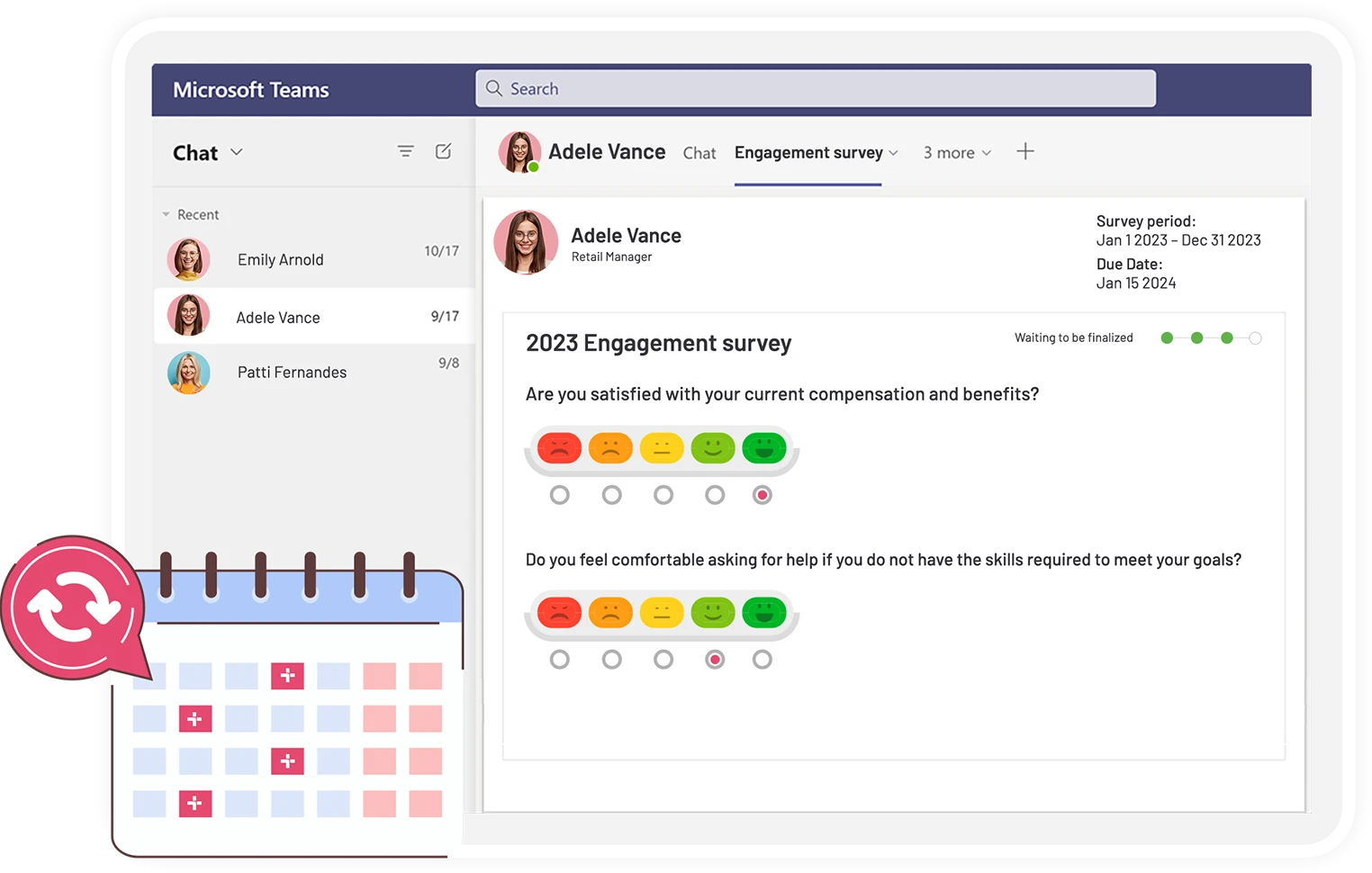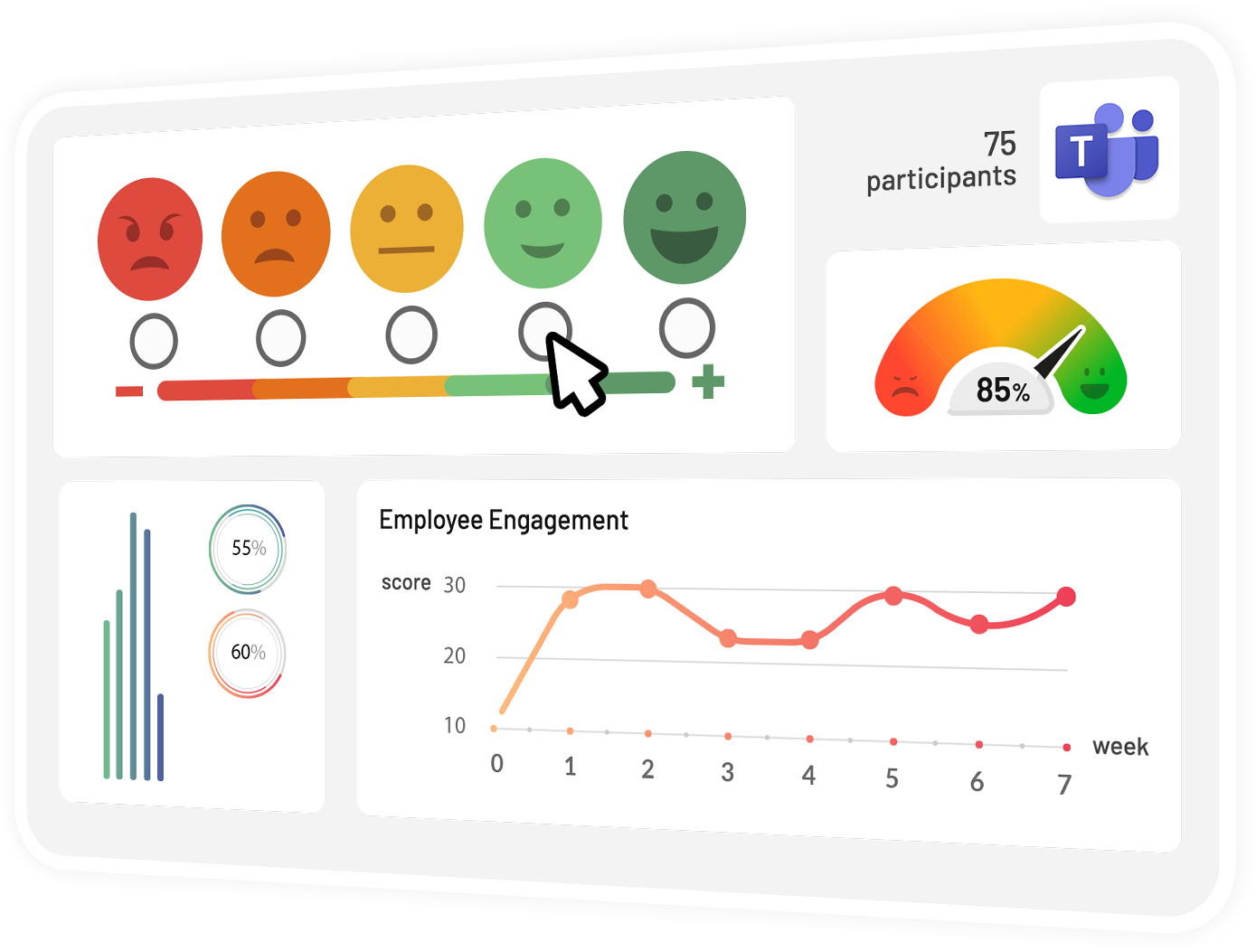Trying to tell apart disengaged employees from engaged ones is a rollercoaster. Some days, your employees are on top of the world, feeling motivated and productive.
On other days, they’re staring at the clock, counting down the minutes until they can clock out and go home. But don’t worry, there’s hope yet!
Being a leader and watching your employees grow more and more disengaged in the workplace is akin to being in a relationship where your partner is slowly but surely growing more and more distant from you and you can’t tell the reason why. No more!
We here at the Teamflect blog won’t stand idly by as that happens. We are going to be the metaphorical marriage counselor you need but are too proud to visit!
Have we run that analogy to the ground? Yes. Has it crashed and burned? Big time. That being said…
- We do have the answers to questions such as:
- How can you identify disengaged employees?
- How can you re-engage employees?
- What are the characteristics of disengaged employees?
So let’s dive right in!
Table of Contents
How Can You Identify Disengaged Employees?

Before you can re-engage your workforce, you will have to identify the problem, in this case, your disengaged employees, and the root causes so that you can start addressing them accordingly. But how do you identify demotivated and disengaged employees?
Disengaged employees can be hard to spot, especially in larger teams, but there are a few key signs to look out for. Knowing these signs will make it that much easier to spot disengaged employees.
- First, disengaged employees are often less productive than their engaged counterparts. They may be completing their work, but not going above and beyond. Don’t get us wrong. We are not on the side of those who point at every single lapse in performance and shout “Not engaged enough!”.
There is a misconception about the correlation between disengaged employees and those who call in sick. Calling in sick is a right! That being said, it is a fact that engaged employees are more often than not, more productive.
- Another sign of disengagement is a lack of enthusiasm or engagement in team meetings or company events. Disengaged employees may also refrain from communication and other interactions, be less likely to speak up, or offer suggestions during these meetings. Once again, make sure you are doing your part to keep those meetings engaging!
- Finally, disengaged employees may also show a lack of interest in the company’s goals and mission. They may not understand how their work fits into the bigger picture. Why would they be invested in the long-term goals, if they don’t see a long-term future?
- Similar to productivity levels, disengaged employees tend to be less innovative and take less initiative compared to their engaged counterparts. Instead, they may stick to the status quo, avoid taking on new challenges, or resist change, hence contributing to productivity less in the process.
- Last but not least, turnover rates can be a definitive indicator of disengaged employees. If a certain department or team within an organization is showing higher turnover rates, the underlying issue could very well be related to employee engagement.
It should also be noted that turnover rates can be high due to a number of reasons so don’t forget to consider other reasons as well before you jump to any conclusions about employee disengagement and high turnover correlations. Regardless, one way or another, employee engagement is still very likely to contribute to a higher turnover percentage.
It’s important to note that these signs don’t necessarily mean an employee is disengaged at work, but it’s a good starting point to identify who may be experiencing disengagement. Remember to keep an eye out for these signs and to make sure to address any issues you find early on before they become bigger problems.
How Can You Re-Engage Disengaged Employees?
Now that you know what to watch out for with disengaged employees so you can identify them, let’s take a look at the 4 steps you can follow to bring your workforce back in and re-engage and motivate your employees.
Step 1: Communicate Openly and Often
When it comes to re-engaging disengaged employees, open communication is key. When employees feel like they’re in the dark, they’re more likely to disengage.
That’s why it’s important to make sure that everyone is on the same page, and that everyone knows what’s going on.
One of the best ways to achieve open communication is to have regular team meetings. These meetings should be used to share updates, discuss progress, and address any issues that may be arising. A great practice to implement in this regard is to conduct weekly team check-ins. These check-ins are a great way to make sure all parties are heard.
Another important aspect of open communication is to make sure that employees feel comfortable sharing their thoughts and ideas. Managers should create an environment where employees feel safe to speak up, without fear of being judged or reprimanded.
It’s also important to remember that open communication is a two-way street. It’s not just about managers sharing information, but also about managers actively listening to what their employees have to say. This can be done through regular one-on-ones, or through employee surveys or feedback forms.
Step 2: Provide Opportunities for Professional Development
Another key factor in re-engaging disengaged employees is providing them with opportunities for professional development.
When employees feel like they’re stuck in a dead-end job, it’s easy for them to become disengaged. But when they see opportunities for growth and advancement, they’re more likely to be engaged and motivated.
There are a few different ways that managers can provide opportunities for professional development. One is through training and education.
This could include on-the-job training, or sending employees to conferences or workshops. By learning new skills, employees can feel more competent and confident in their work.
Another way to provide opportunities for professional development is through mentorship. By pairing employees with more experienced mentors, they can learn from someone who has been in their shoes.
Step 3: Invest in employee engagement tools

There is a myriad of incredible employee engagement software available to people leaders all around the world! In fact, there are so many awesome tools out there that we’ve made an entirely separate list of the best employee engagement software of 2023!
Picking the right employee engagement software might be the difference maker between engaging your employees or remaining surrounded by disengaged employees.
Do you know what is harder than engaging employees? Remote employee engagement. In remote or hybrid models, the way to keeping employees engaged goes through employee engagement software. If your organization uses Microsoft Teams in its day-to-day operations, then Teamflect is the employee engagement software for you!
Teamflect provides users with the ultimate way to measure employee engagement, right inside Microsoft Teams: EMPLOYEE ENGAGEMENT SURVEYS.
Teamflect users can conduct employee engagement surveys right inside Microsoft Teams, integrating their employee engagement practices very easily into their workflows.



